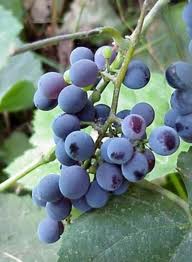Summer Solstice Waxing Strawberry Moon
The longest day of the year. Light triumphant, streaming, steaming. The darkness held at bay.
Summer Solstice
This is an astronomical phenomenon transformed and translated into a spiritual one. We humans have over millennia taken solstice and equinox alike as moments out of time, a sacred caesura when we could review our life, our path as the Great Wheel turns and turns and turns once again.
The Celts first divided their year into two: Beltane, the beginning of summer, and Samhain, literally summer’s end. As their faith tradition developed, they added in both solstices and equinoxes. Since Beltane and Samhain occurred between the spring equinox and the summer solstice and the autumnal equinox and the winter solstice respectively, they became known as cross-quarter holidays. Imbolc and Lughnasa filled in the other two cross-quarter spots.
It is the eight holidays, the four astronomical ones and the four cross-quarter, that make up the Great Wheel. In the most straight forward sense the Great Wheel emphasizes cyclical time as opposed to linear or chronological time. This seems odd to those of us raised in the chronological tradition influenced by Jewish and Christian thought in which there is an end time. With an end to time the obvious influence on our perception of time is that we progress through the days until they become years, which become millennia until the Day of the Lord or that great risin’ up mornin’ when the dead live and time comes to a stop.
That this is an interpretation rather than a fact rarely crosses the mind of people raised on birthdays, anniversaries, celebrations of one year as it comes followed by the next. Our historical disciplines from history itself to the history of ideas, art history, even geology and the theory of evolution all reinforce the essentially religious notion of time as a river flowing in one direction, emptying eventually into an unknown sea which will contain and end the river.
Immanuel Kant, in attempting to reconcile the dueling metaphysics of two apparently contradictory philosophical schools (rationalists and empiricists), hit on the notion of time and space as a priori’s, in a sense mental hardwiring that allows us to perceive, but is not inherent in the nature of reality. That is, we bring space and time to the table when we begin ordering our chaotic sense impressions. My interest in the Great Wheel and in the traditional faith of my genetic ancestors came in part from a long standing fascination with the question of time. We are never in yesterday or tomorrow, we are always in now. What is time? What is its nature and its correct interpretation relative to the question of chronological versus cyclical time?
I have not settled these questions, not even in my own mind, and they continue to be live topics in philosophy. Learning to pay attention to the Great Wheel, to the now, and to the specific place where I live has pushed me toward the cyclical view, as has gardening and now the keeping of bees. It is, today, the Summer Solstice. Again. As it was the last time the earth visited this location in space (ah, yes, space. another conversation which we’ll bracket for now) and as it will be the next time. This is a literally cyclical view of time based on the earth’s orbit around the sun, one which returns us, over and over to much the same spot.
Next summer when the solstice arrives the asiatic lilies will be ready to bloom, Americans will be getting ready to celebrate the fourth of July and kids will be out of school. The mosquitoes will have hatched, the loons returned and basketball will finally be over. These kind of phenological observations depend on the repetitive, cyclical character of natural events. There is a real sense in which this time does not move forward at all, rather it exists in a state of eternal return, one solstice will find itself happening again a year later. Is there any progress, from the perspective of the solstice, from one to the next? Not in my opinion.
I don’t deny the intellectual value of arranging knowledge in what appears to be a rational sequence. It aids learning and explanation, but it may well be a mistake to think that sequence exists outside our mental need for it. It may just be that time is, in some sense, an illusion, a useful one to be sure, but an illusion none the less.
Even if it is, we still will have the Summer Solstice and its celebration of light. We will still have the Winter Solstice and its celebration of the dark. We can see each year not as one damned thing after another, but as a movement from the light into the dark and back out again. We can see the year as a period of fallowness and cold (here in the temperate latitudes) followed by a period of fertility and abundance. This is the Great Wheel and it currently makes the most sense to me. That’s the light I have today anyhow. Let’s talk next year at this time.
 leeks stretch that, but I’ve done it consistently. This is long enough to get most garden vegetables including tomatoes, peppers and others that require frost free conditions when planting. (which shortens the season).
leeks stretch that, but I’ve done it consistently. This is long enough to get most garden vegetables including tomatoes, peppers and others that require frost free conditions when planting. (which shortens the season).